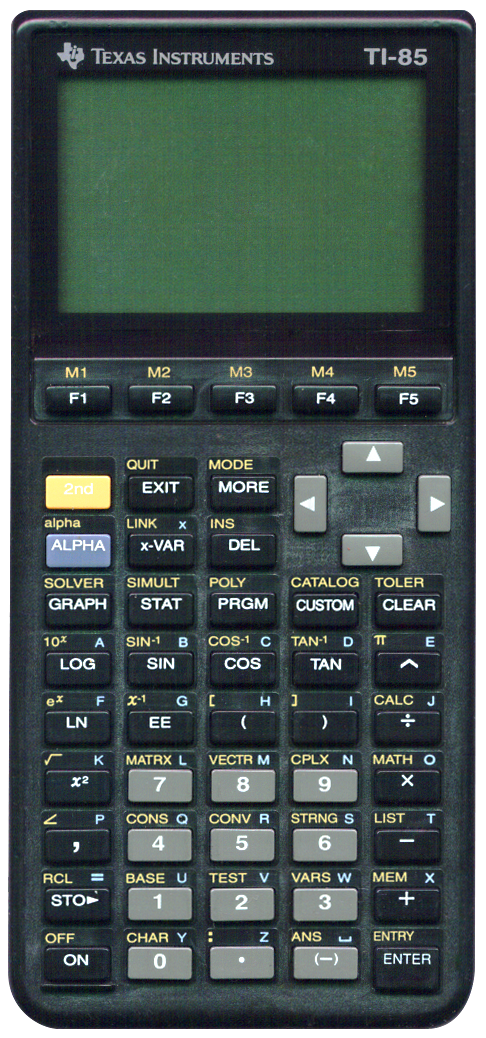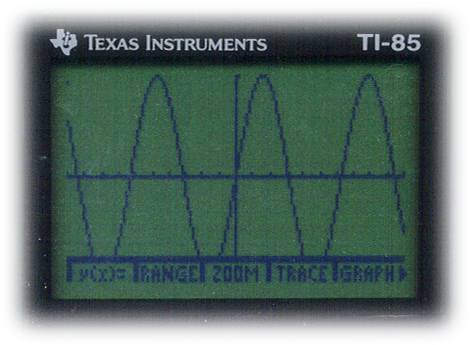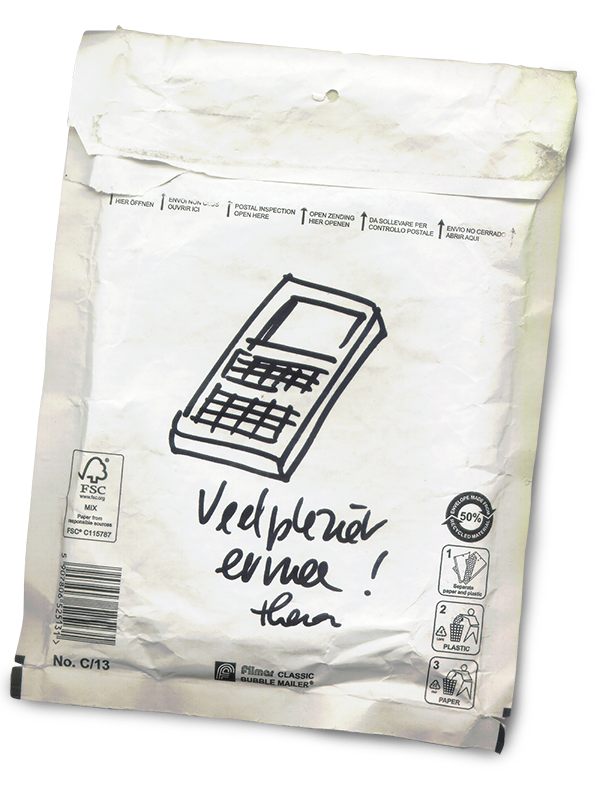
Terminated: unknown
I have never seen the TI-81, but looking at this TI-85, all the basics of the following series are already there. In fact most of what is present on the TI-85, like its menu structure and graphing capabilities are standard issue on modern Graphical Calculators.
 The calculator has, of course, graphing abilities (even polar) but is
also able to do matrix operations and lists, vector operations, BASE
conversion, has an equation solver (with up to 10 simultaneous linear
equations), named variables (up to eight characters per name), replay,
complex numbers, statistics, string operations, a Greek character set, a
database of 15 built-in and user defined constants, and of course
programmability with all the necessary flow control. Displayed here is
a plot of the sine function.
The calculator has, of course, graphing abilities (even polar) but is
also able to do matrix operations and lists, vector operations, BASE
conversion, has an equation solver (with up to 10 simultaneous linear
equations), named variables (up to eight characters per name), replay,
complex numbers, statistics, string operations, a Greek character set, a
database of 15 built-in and user defined constants, and of course
programmability with all the necessary flow control. Displayed here is
a plot of the sine function.
There is also a CATALOG function to list all of the calculator’s commands. Reminds me of the HP 41 series of calculators where this was a Very Cool function to play with.
The ALPHA key takes getting used to, pressing it twice will lock the calculator into "ALPHA" mode. Lock into lower-case alpha by either pressing ALPHA followed by 2nd and ALPHA, or by using: 2nd ALPHA followed by 2nd ALPHA.
Press ALPHA when locked in "ALPHA" mode to switch between lowercase and uppercase.
While this can not be seen on my scan, the display is slightly tilted for better readability. Its contrast can be changed using 2nd together with the ▲ and ▼ arrow keys.
This calculator has an internal accuracy of 14 digits and a 3 digit exponent. It runs on a Zilog Z80 processor and machine language programming was possible by modified backups made using the TI-85 LINK option (see Wikipedia (link validated 2025-12-06)). Its RAM is quite large at 32 kB.
 Thank you very much, Thera van der Aa, for finding this calculator in a second
hand store and donating it to the museum! Thank you as well for the nice illustration
at the back of the enveloppe. I couldn’t just throw such an enveloppe away and had
to scan and display it! :-)
Thank you very much, Thera van der Aa, for finding this calculator in a second
hand store and donating it to the museum! Thank you as well for the nice illustration
at the back of the enveloppe. I couldn’t just throw such an enveloppe away and had
to scan and display it! :-)